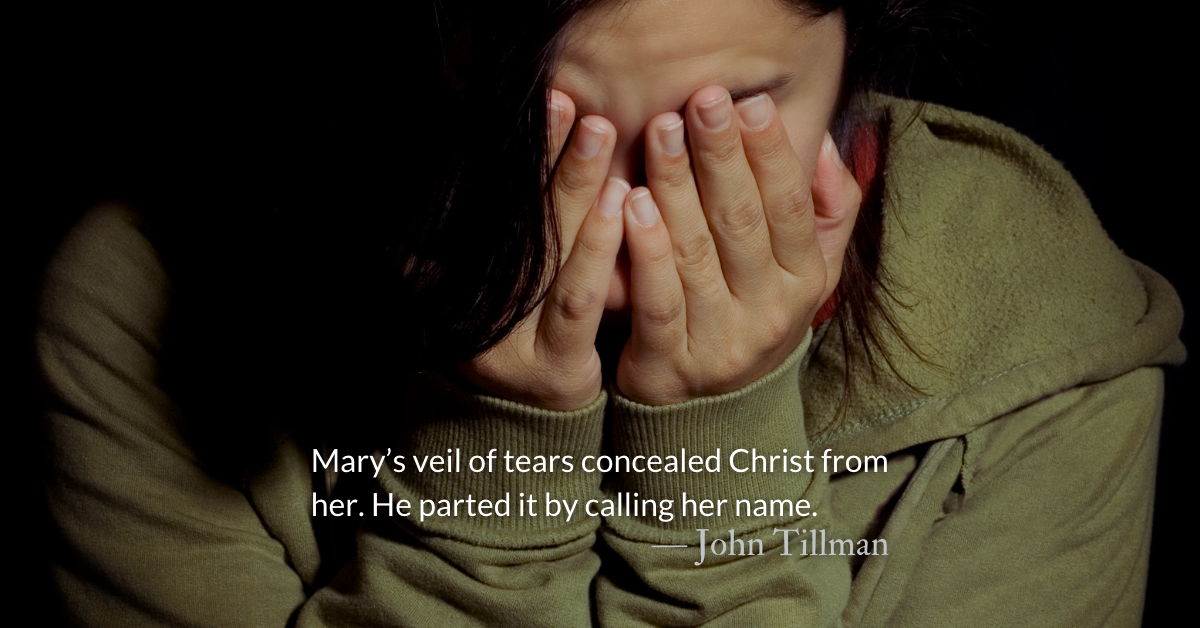Scripture Focus: Mark 16.6-11
6 “Don’t be alarmed,” he said. “You are looking for Jesus the Nazarene, who was crucified. He has risen! He is not here. See the place where they laid him. But go, tell his disciples and Peter, ‘He is going ahead of you into Galilee. There you will see him, just as he told you.’”
8 Trembling and bewildered, the women went out and fled from the tomb. They said nothing to anyone, because they were afraid.
9 When Jesus rose early on the first day of the week, he appeared first to Mary Magdalene, out of whom he had driven seven demons. 10 She went and told those who had been with him and who were mourning and weeping. 11 When they heard that Jesus was alive and that she had seen him, they did not believe it.
From John: We all need the reminder, from this 2019 post, that Jesus is not ashamed of us in our grief. He comes to us in the midst of it.
Reflection: In the Face of Grief
By John Tillman
Christ’s resurrection—an event he directly predicted over and over in the scriptures—is the miracle the disciples seemed the most unprepared for.
They continued with the normal obligations of life. They continued in societal expectations. But inwardly they carried a deep sorrow. And it is in this sorrow that Christ visited them.
Mary’s veil of tears concealed Christ from her. He parted it by calling her name.
Peter’s experience after the tomb left him doubtful as opposed to convinced. Paul tells us that Jesus appeared to Peter specifically and Peter’s experience on the shore with Jesus after returning to fishing for fish instead of men showed the raw and sensitive reality of his emotional state. Peter’s fear of failing (again) paralyzed him, but Christ re-called him, reinvigorated him, and continued transforming him from Simon to Peter, the Rock.
The disciples on the road to Emmaus were described as downcast. They were headed in the wrong direction, too grief-stricken to follow Christ’s instruction to travel to Galilee. Jesus enlightened them intellectually and changed their direction and purpose.
Mark’s account gives us the unique detail that the disciples in the upper room were gathered, weeping and mourning before the women reported to them and Christ appeared.
None of Christ’s followers had to leave their sorrow behind for Jesus to come to them.
They didn’t have to defeat their crippling fear before they were worthy of Christ’s presence.
They didn’t have to know the theological answers about why Christ died or where he had been for all this time.
They didn’t have to be in the right place. (Only the encounter after fishing is in Galilee, where Christ, through the women, told the disciples to meet him.)
The resurrected Christ seems to have a special preference for appearing to the grieving. Why then do we seem to assume that this stopped when he ascended?
Every instance of grief in our lives will not be met with the miraculous reversal of a resurrection. But in every instance of grief, we can be assured that Christ will come to us. He will call our name as he did Mary’s. He will seek to transform us as he did Peter. He will change our direction and our purpose as he did Cleopas and his companion.
In the face of grief, seek the face of Christ. He is coming to you.
Divine Hours Prayer: The Request for Presence
Lord God of hosts, hear my prayer; hearken, O God of Jacob. — Psalm 84.7
Today’s Readings
Genesis 39 (Listen 3:08)
Mark 16 (Listen 2:34)
Read more about The Grace of Holding Space
As Christ-followers, we are called to carry one another’s burdens. Although it can be awkward, during these sacred times, silence is our ally.
Read more about Undignified Weeping and Dancing
Hannah carried the weight of her grief to God’s presence and broke open her heart with shameless weeping.







